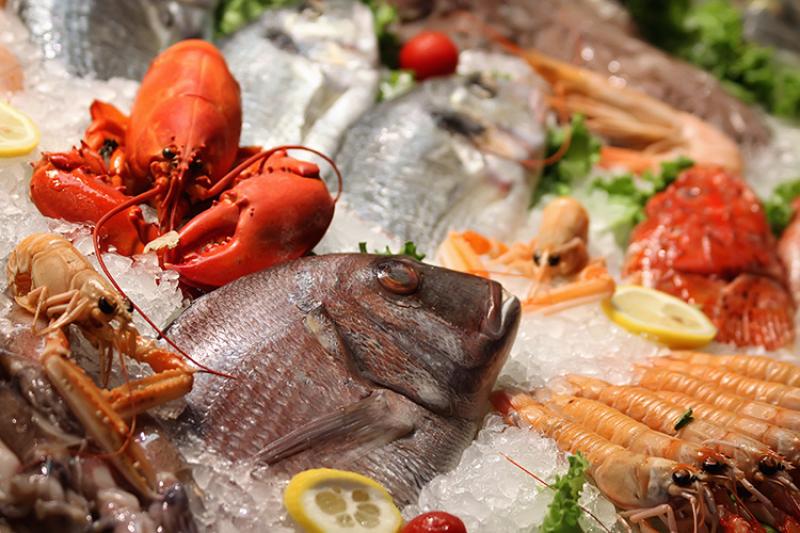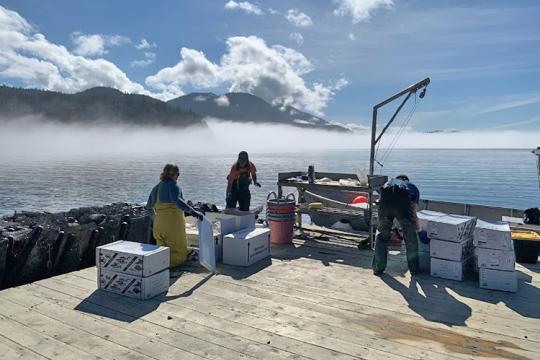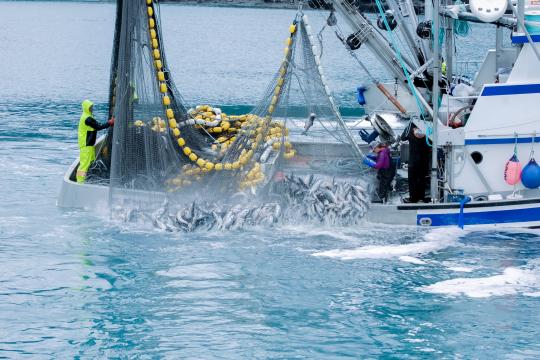Eating more seafood is a great way to improve bone strength, brain development, and immune and cardiovascular systems. It also gives you an exciting opportunity to branch out from your tried-and-true recipes and try some lesser-known fish.
You can support our nation’s sustainable seafood industry—and the working waterfront communities that rely on it—by cooking with fish harvested in the United States. Check out these recipes to expand your recipe rotation.
Acadian Redfish
Thanks to its mild flavor and flaky texture, acadian redfish is perfect for making fish tacos. You can also use it in place of haddock or similar fish. Caught by U.S. fishermen from Maine to New York, Acadian redfish is low in saturated fat. It’s also a good source of proteins and other nutrients important to human health.
Atlantic Pollock
U.S.-harvested Atlantic pollock comes from fishermen from Maine to Virginia. It has a higher oil content than popular members of the cod family, including haddock and Alaskan pollock. That means it has a stronger flavor, and its texture is firm with coarse flakes. Atlantic pollock is very low in saturated fats. It’s also a great source of protein, vitamin B12, phosphorus, and selenium.
Dover Sole
In Dover sole, you’ll find a meaty texture and mild, sweet flavor. This flatfish hails from the Pacific waters of Alaska through California. Dover sole can be prepared a number of ways and is great roasted, grilled, or sauteed. It’s low in fat, high in protein, and a good source of calcium.
Mackerel
If you’re looking for a rich flavor, mackerel is a great option. You may have seen species of mackerel served as a special dish in sushi restaurants. At home, you can bake, barbeque, grill, smoke, and pan fry mackerel. However you prepare it, mackerel is a great source of omega-3 fatty acids, niacin, selenium, and vitamins B6 and B12.
- Herb broiled mackerel steaks
- Pan roasted mackerel with roasted fingerling potatoes and horseradish cream
Opah
Opah—aka moonfish—is caught by U.S. fishermen off California and Hawaii and in the surrounding high seas. It has a distinctive rich, creamy taste and seven cuts with different textures, providing you with a lot of options for how to cook it. Try swapping opah into your favorite tuna or swordfish recipe. It’s a rich source of omega-3 fatty acids, protein, niacin, vitamins B6 and B12, phosphorus, and selenium. It’s also low in sodium.
Seafood industry and scientists team up to make the most of opah
Scup
Scup, with its lean flesh and mild flavor, is usually sold and cooked whole. Its small bones make filleting difficult. Instead, try cooking it up whole in a pan, on the grill, or in the oven for an easy and delicious meal. Commercially harvested in the United States from Massachusetts to North Carolina, scup is a low-sodium, low-fat source of protein. It’s also high in niacin, phosphorus, vitamins B6 and B12, and selenium.
Shortspine Thornyhead
Commonly sold as Pacific rockfish, shortspine thornyhead is caught by U.S. fishermen from the Bering Sea to Baja California, Mexico. This species has a sweeter flavor than other rockfish. Its firm, coarse-flake texture makes it well suited to be grilled, sauteed, poached, baked, or deep fried. Shortspine thornyhead is high in selenium, which is important for thyroid function, DNA production, and protecting the body from infection damage.
- Pan roasted rockfish with crab and tomato salsa fresca
- Shallow poached Pacific rockfish with apples and almonds
Sustainable rockfish return to market
NOAA Fisheries arms you with the facts about what makes U.S. seafood sustainable—from the ocean or farm to your plate. Get up-to-date information on the status of harvested marine fish and farmed fish, and learn more about various aspects of U.S. seafood.












